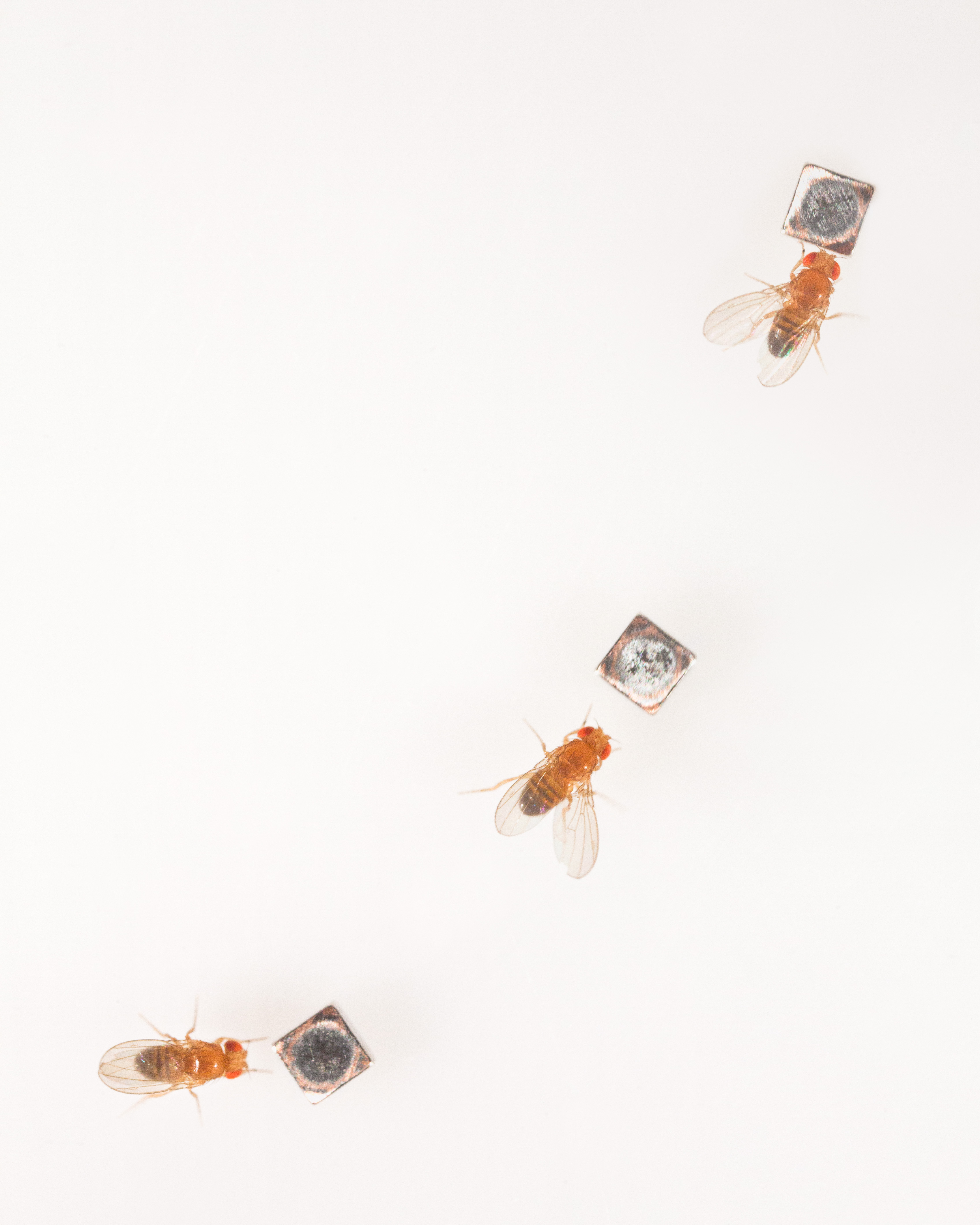Sensory cues and courtship

As a graduate student, I built a modifiable, programmable fly dummy that, when coupled with automated behavioral tracking, revealed how male Drosophila melanogaster use visual and chemosensory cues to dynamically modulate their ability to find and chase mates. Drosophila courtship has long been a model for how neural circuits enable complex, sequential behaviors. However, previous courtship studies did not account for how sensory cues are temporally and spatially encountered by male Drosophila during courtship, nor did they measure the effect of visual cues. The fly dummy allowed me to dissociate visual and chemosensory cues and study their precise influence on males’ courtship behavior. I paired male flies with dummies of various shapes, sizes, speeds, and pheromone coatings and determined that visual and chemosensory cues serve distinct functions at different phases of the courtship sequence due to their spatial distribution and the male’s ability to detect them.
Additionally, I discovered that male Drosophila can use not only shape and size, but also contrast cues to identify mates. I presented males with small, fly-sized, dummies painted either black, white, or gray. Surprisingly, males frequently chased the medium-contrast gray dummies and rarely chased the high-contrast black dummies. This preference can be mediated by the color of the background behavioral chamber, suggesting that males avoid chasing high-contrast targets. Contrast cues can also be used to bias males’ position while chasing, such that males would chase only one end of the dummy, similar to what happens during natural courtship with a female.
Overall, these results were the first to demonstrate that Drosophila males can visually identify mates, revealed the importance of the spatial structure of sensory cues, and required a revision of current models of the neural control of courtship.
This work was completed in the laboratory of Dr. Michael Dickinson at the California Institute of Technology and University of Washington.